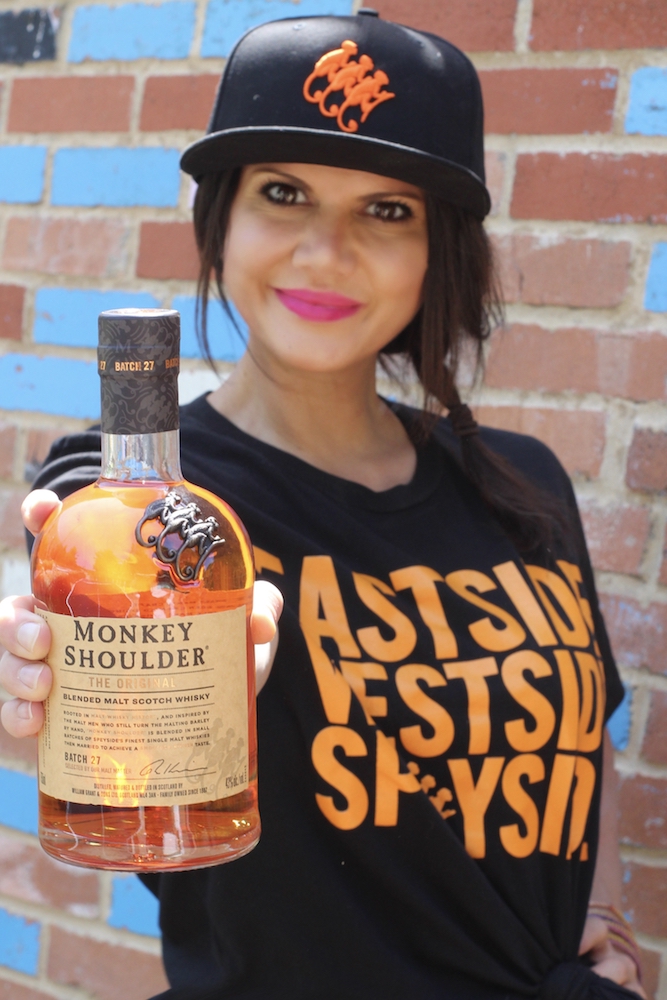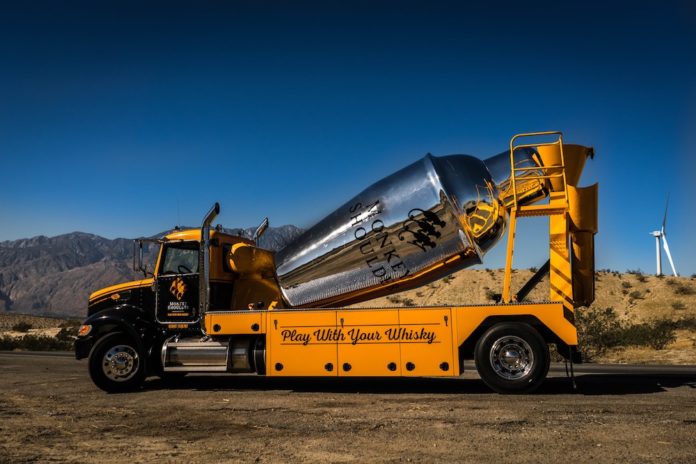Few Scotch brands have captured a wider demo that Monkey Shoulder. This blended whisky brand from William Grant & Sons launched in 2005 with the objective of attracting mixology use. In this goal it succeeded. Monkey Shoulder has become ubiquitous to back bars and cocktail menus around the world.
But the brand, perhaps unexpectedly, has also found a second following. It’s not unusual to see Monkey Shoulder posted on social media by users who praise the spirit as excellent for sipping. Made for mixology, this smooth blended whisky has discovered a large demo who drink it neat.

What gives? How can a cocktail Scotch also be a sipper? Why has Monkey Shoulder succeeded where so many other Scotches have failed — claiming a place in two very different demos?
For answers, we recently spoke with Anna Mains, a former bar-owner and Maker’s Mark representative who is now Monkey Shoulder’s new brand ambassador, and Shem Blum, brand manager. We also chatted about Scotch cocktails, and how COVID-19 has affected the brand.
Beverage Dynamics: How has Monkey Shoulder obtained such a wide demo?
Anna Mains: One thing that was easy for me coming from the bourbon side was seeing people sip Monkey Shoulder. The American palate leans towards those strong bourbon flavors, and many of those specific notes are in Monkey Shoulder. It’s easy for people to mix, but is also a very approachable for people who are newer to trying spirits.
Sipping Monkey Shoulder is so easy. It’s so smooth. It’s something comforting. In our new age, not everybody wants a harsher bourbon or peaty Scotch. It’s something that anyone can drink.
A lot of consumers who experience the brand don’t even know it’s a Scotch at first. They just know it’s whisky.

Shem Blum: The majority of that growth [among sippers] has been organic and fortunate for us. The mixology component was very intentional from a brand perspective. William Grant & Sons focused early on in working closely with the on-premise trade to give them the liquid quality that they wanted. We wanted to create something that the bartenders could play with. We wanted to change the conception of Scotch, how you consume it. We wanted to show that there was more to Scotch cocktails than just the Blood and Sand. We wanted to make a whisky so versatile that it could have wide use in all kinds of cocktails.
Monkey shoulder has an approachable price point, and the whisky heritage of William Grant & Sons. We educate retailers about on points. We wanted to create a blended whisky with the William Grant & Sons credentials. We wanted to revive the blended malt category.
BD: It’s impressive how Monkey Shoulder has found such a welcome home on cocktail menus.
AM: Right now, the last couple of years, we’re seeing a trend in trade of moving away from serious brands towards those with a more playful attitude. There’s a stigma against Scotch in cocktails and we’ve helped push against those boundaries.
A lot of bartenders were early adopters with Monkey Shoulder. The trade sets the trend and then consumers listen to the trade. Consumers don’t question bartenders; they drink what the trade puts in front of them.
We’ve been pushing the idea of using Monkey Shoulder instead of rum for tropical drinks. You can make light, fruity, refreshing cocktails with Scotch — like the Monkey Colada.
Or the Monkey Highball. The Highball movement has become popular. It’s a quick and easy cocktail to make at home, cost effective, and you can sip it throughout the day. I see a movement more towards these kinds of long drinks rather than the stirred sippers. Monkey Shoulder plays really well in those areas.
We’ve taken the approach of ‘Mr. Potato Head’ cocktails, by which I mean you can take any classic cocktail and try swapping in Monkey Shoulder for a different alcohol. Like the Boulevardier. Take out rye and try it with Monkey Shoulder.
BD: How has COVID-19 affected the outlook for this brand?
SB: Our strategy initially was with mixers, like our porta potty speakeasies, or at music festivals. We had tremendous success with those last year. Customers never expect Scotch whisky to activate in that way, or even be at a music festival in the first place. They don’t expect Scotch cocktails to come out of a giant concrete mixer.
Unfortunately, with COVID-19, now we are trying to figure out new ways to continue to grow the brand. We don’t know when large gatherings will be back. And the real focus, as things begin to reopen, is how can we support bars and restaurants? Instead of educating the on-premise, now we’re looking at how we can support these accounts that are struggling.
There is opportunity for us to grow in the digital/social environment. Our investing had been more towards experiential events; now we’re shifting more towards digital/social.
AM: Bartenders now want some sort of escape. So we’ve been putting together a ‘Skills To Pay The Bills’ competition. It’s an industry-wide talent show. I found one bartender who is an aerial dancer. Another can shoot hoops blindfolded, and another is a bird-caller. It’s going to be lighthearted, humorous, like ‘America’s Got Talent’. We’re giving people a way to have a highlight of the day.
We’re also talking with operators about putting together educational programming that allows us to work quicker, together and on our feet, in adapting. Every week now, our environment changes. We want to highlight the successful cocktail-to-go programs so that other operators can put these systems into place.
We’re trying to take a positive outlook. Our whole plan for 2020 is no longer applicable, but never before have we had such a blank slate. We can use this as an opportunity to help fix a lot of what we wanted to fix in our industry, while being creative. Instead of a negative, we’re trying to use this blank slate as a challenge, and as an inspiration.
Kyle Swartz is editor of Beverage Dynamics magazine. Reach him at kswartz@epgmediallc.com or on Twitter @kswartzz. Read his recent piece How Can Craft Distilling Survive The Coronavirus?







Monkey Shoulder is my Whisky when drinking at home alone. I am a sipper.
Normally I take the first double neat after which I add two cubes of ice. Brings out the aroma.
I find it smooth on the palate.